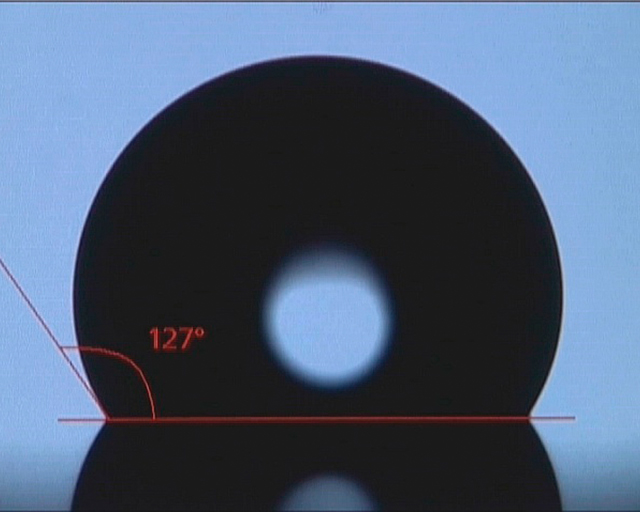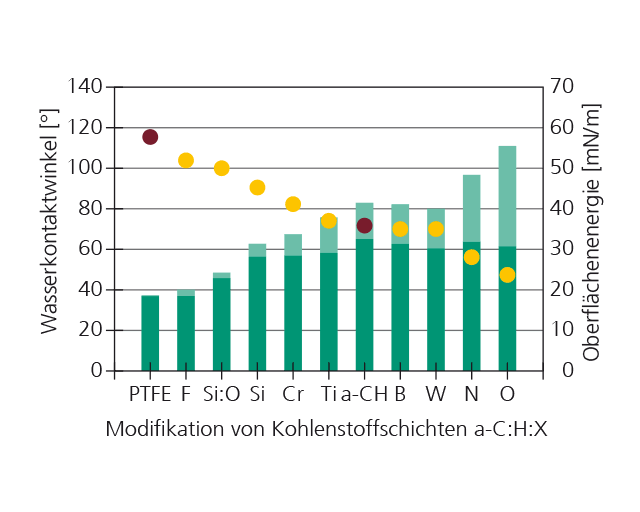
Contact angle measurement: Determination of the contact angle and surface energy of samples

Surface energy is a material constant that determines if a surface is wetted by a liquid (such as water) or whether the liquid rolls off easily (example: self-cleaning surfaces). The surface energy also determines whether another solid adheres to it well or poorly (example: non-stick frying pan).
The wettability of a solid can be quantified by means of contact angle measurement. In this process, the contact angle (wetting angle) of a drop of test liquid is measured in what is called the three-phase point. The surface energy of the solid can also be determined as a measurement for the adhesion behaviour and surface tension of the test liquid.
Fraunhofer IST uses an optical contact angle measuring device from the company Dataphysics. It is equipped with six test liquids for the calculation of surface energy. The wetting behaviour of a test liquid can be measured as well. Since the wetting behaviour is temperature-dependent, the contact angle measurement can be carried out with the help of a Peltier temperature control system at specific temperatures in the range from -10 °C to 150 °C and under defined atmospheric conditions.
Contact angle measurements can be performed both dynamically and statically. For dynamic measurements, both the progressive angle and the regressive angle can be measured. Adsorption processes can also be analysed by means of video recording.
Contact angle measurement
How does the surface energy measurement work?
The surface energy is determined by contact angle measurement with six different reference liquids. This also allows the polar and dispersive proportion of surface energy to be determined. In this surface energy measurement, modifications of amorphous carbon (a-CH) produced through doping with various accompanying elements (F...O) were investigated. Teflon (PTFE) is also specified for comparison.

